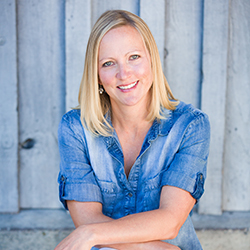To find out what inspires their interest in UAS and attracts the Advisory Board Members to support Drone World Expo, we scheduled a series of exclusive interviews. Our eleventh interviewee is Gretchen West, Senior Advisor of Innovation and Technology at Hogan Lovells.
Gretchen has served the unmanned systems industry over a decade and is an industry-leading advocate for commercial robotics. Prior to joining Hogan Lovells, Gretchen was at San Francisco start-up DroneDeploy serving as the company’s Vice President of Business Development and Regulatory Affairs. Previously, for over a decade, Gretchen served as AUVSI’s Executive Vice President, overseeing AUVSI’s global business development initiatives and government relations efforts for the unmanned systems and robotics industry.
If I understand correctly, your first job was at AUVSI. This must have looked like quite an adventurous step to take at the time – what prompted your interest in unmanned aircraft
My background out of undergrad was in non-profit management and I worked for a large association management firm where I was exposed to dozens of different associations in various fields such as medical, healthcare, technology and more. That firm also managed AUVS, which did not have the “I” at the time in its name, nor did I have any interaction with that association. My career took me around the US a bit and I landed back in Washington, DC to pursue my MBA. Upon graduating, the executive director of AUVSI, who I knew from that previous firm, was hiring and I took a leap of faith, not knowing anything about unmanned systems, and 11 years later I am still in this fast-paced and exciting industry. It’s been a remarkable journey watching the changes and growth in the industry, especially with the rise of the consumer and commercial drone industry, and I look forward to participating in its growth for many more years.
AUVSI was initially more involved with military systems – at what point did it become clear that there was also a big future for commercial applications?
I cannot remember a time at AUVSI when we did NOT talk about how the commercial market was going to be massive, but no one knew when that shift would come. There was always an understanding for many years that the commercial (and consumer) markets for unmanned systems and drones would dwarf the military market globally, and we have obviously seen that growth just in recent years with much more growth to come.
You are now recognised as a leading advocate for commercial applications – can you tell us about your role at law firm Hogan Lovells?
My passion since jumping into this industry has always been to grow the unmanned systems and drone community and reduce any barriers impeding that growth. I’ve been fortunate enough in my career to participate in education, advocacy and leadership opportunities to help this industry grow and I’m able to continue this passion at Hogan Lovells. As a senior advisor and member of the Global UAS Practice Group, I get to work with a multitude of clients – from drone manufacturers to end users to service providers – to help them strategize market entry and positioning, understand the regulatory environment, create synergies between policy and innovation and much more. We have many initiatives we are pursuing as a collaborative effort with the commercial drone industry to pull forward the market potential and make it a reality. With the full support of Hogan Lovells, our Global UAS Practice Group is able to be both nimble and aggressive to achieve our goals and it’s a really exciting time and place for our community.
You’ve been active in pushing for the integration of UAS into the National Airspace System – How do you rate the FAA’s approach to integrating UAS operations into the NAS …? Are they being too cautious?
Integrating UAS into the National Airspace System is a monumental task with many complexities. Drones were introduced as a new technology and the FAA was forced to determine how to integrate (not segregate) them based on existing laws governing the airspace. Would it have been easier to start from scratch and determine rules based on the technology and not the airspace? Possibly, yet the government works because it follows certain guidelines and laws. We are always going to want more immediate reaction and solutions, yet the FAA has made great strides in getting us to a place where drones can be operated commercially. It’s not full integration, but the FAA’s top priority is safety, and as a community, we need to ensure that we are operating and flying safely so we can get to full integration. The FAA is being cautious, as they should be. And our industry needs to be cautious as well so as not to jeopardize the future growth of commercial and consumer drones.
There’s been a range of UAS events recently – what convinced you to support Drone World Expo?
For most of my career in the unmanned systems community, much of the focus has been on drone manufacturers, software providers and service providers. Events cater to these same communities and while there usually is content that is educational for end users, the reach into the end user community has been lacking. And I believe this is the most important community as they are the individuals and companies that are interested in buying the technology and searching for value. The Drone World Expo’s commitment to focusing on the end user is what drew me to them and why I have provided my support. Watching the development of the educational content, the value that end users will receive and the caliber of the registered end users has only strengthened my commitment to them and I look forward to being part of this ground-breaking event.
[UAS Vision is an Official Media Partner for Drone World Expo – Ed.]

